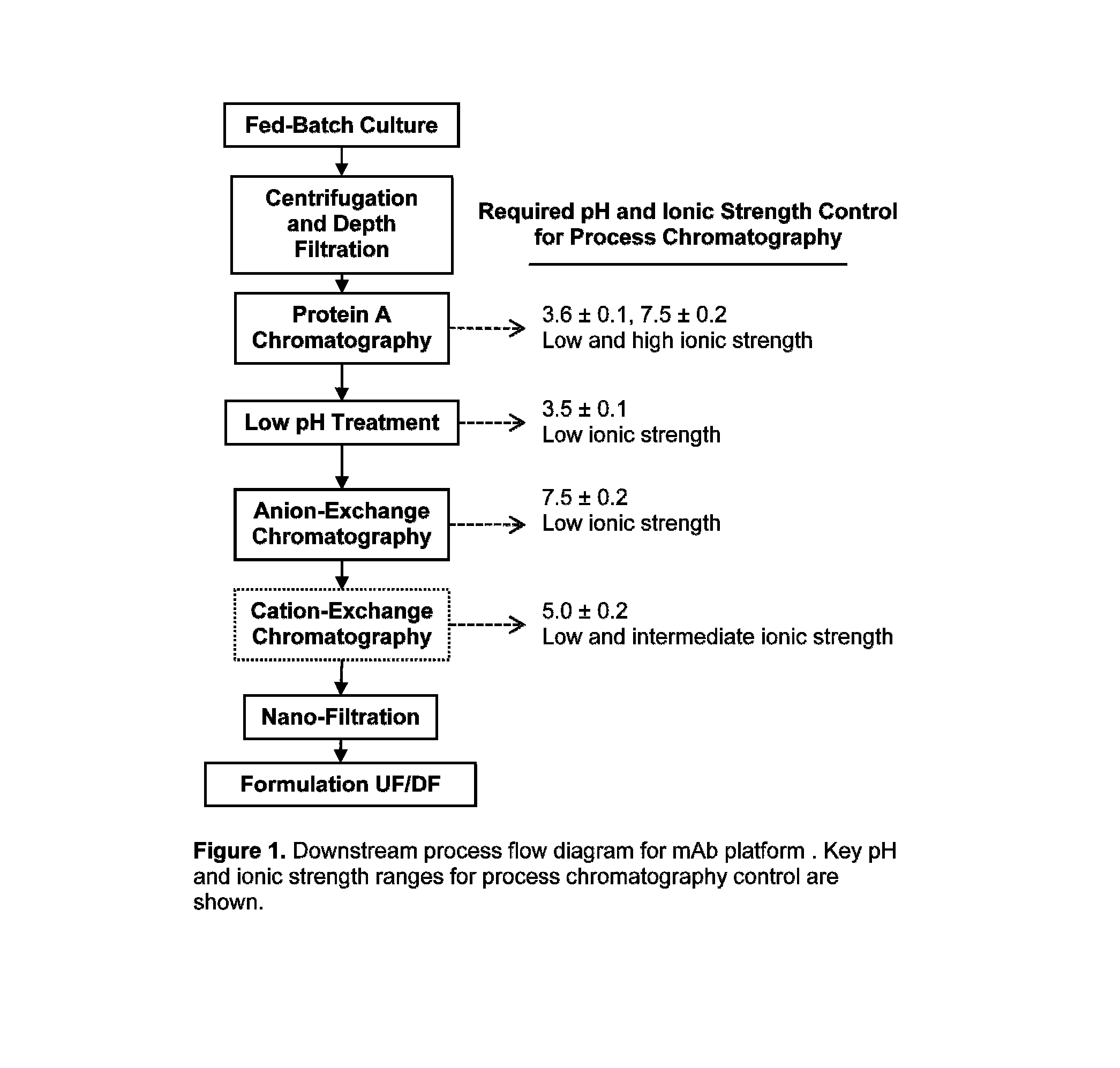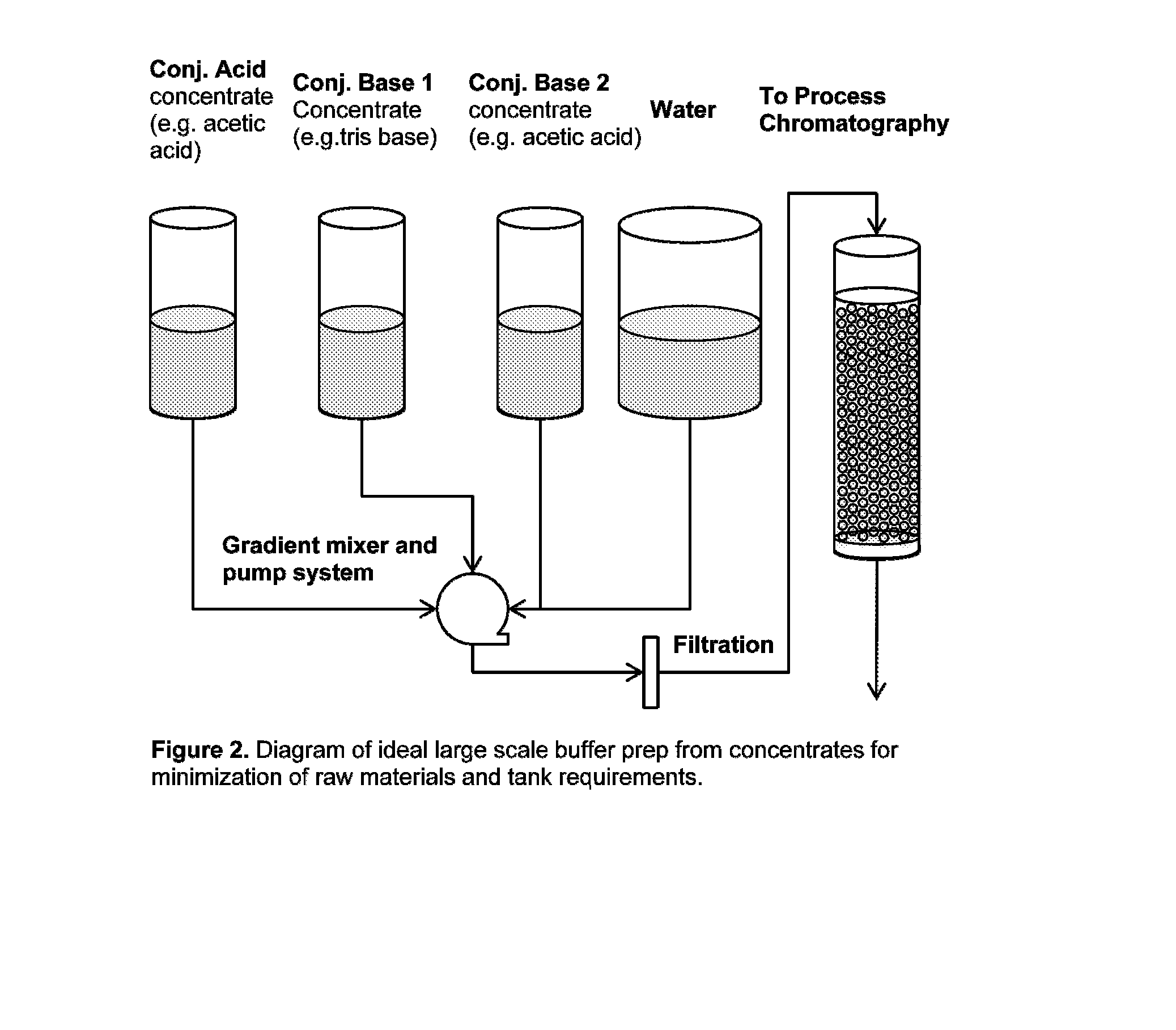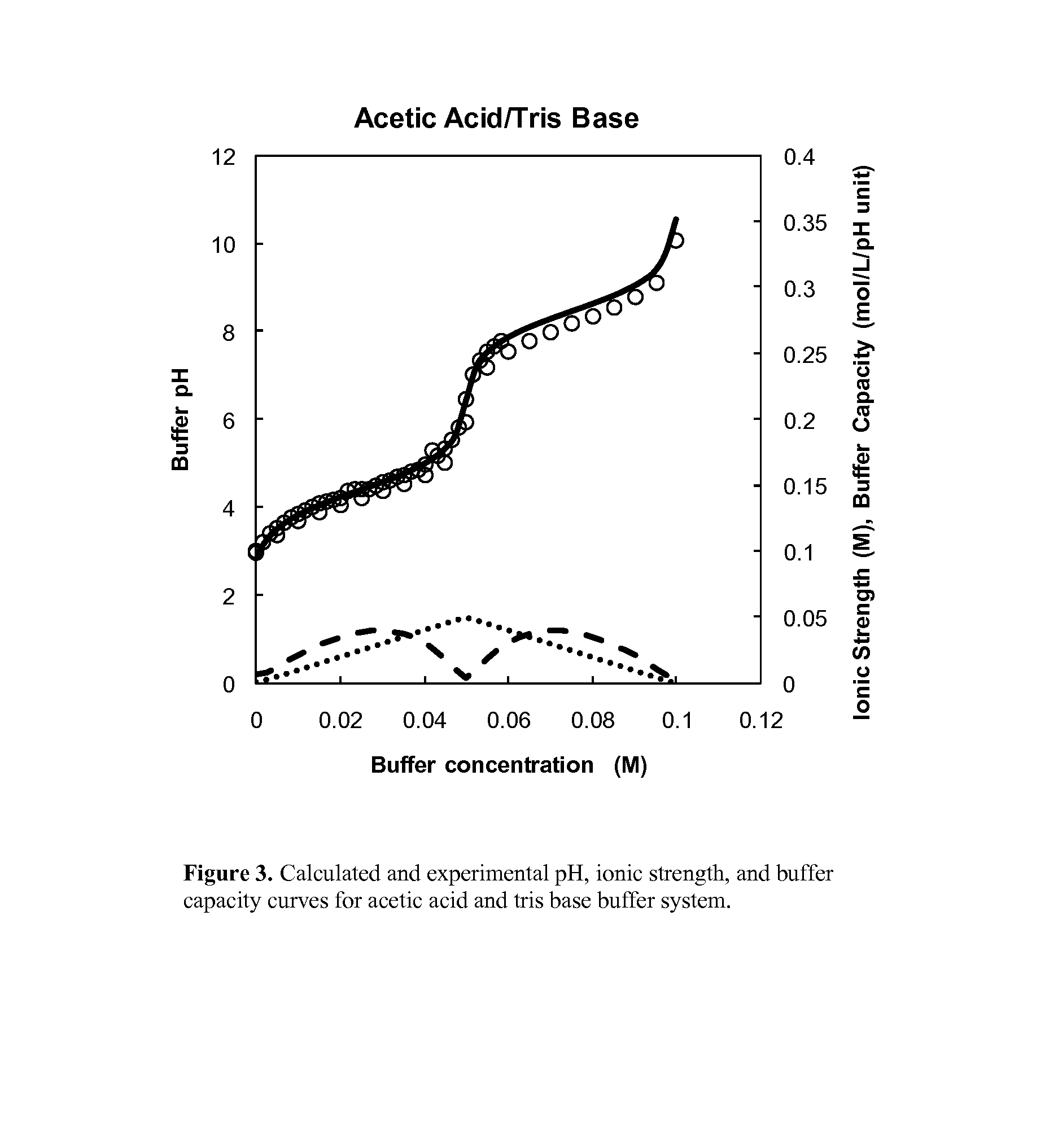Buffer system for protein purification
a buffer system and protein technology, applied in the direction of peptides, separation processes, instruments, etc., can solve the problems of cumbersome implementation in large-scale manufacturing, and achieve the effect of removing contaminants and corroding the impact of high-concentration chloride solutions
- Summary
- Abstract
- Description
- Claims
- Application Information
AI Technical Summary
Benefits of technology
Problems solved by technology
Method used
Image
Examples
example 1
[0065]A number of potential buffer components that could be implemented in a two-component buffer system, along with a third component for modulating ionic strength (deliberately excluding sodium chloride) through a platform process for antibody purification have been evaluated. Table 2 lists these components that are generally considered compatible with bioprocesses. In these experiments, as shown in FIG. 2 a liquid chromatography system with gradient delivery capabilities, was used to mix concentrated buffer solutions and measure pH and conductivity at various ratios. FIGS. 3, 4, 5, 6 present sample results for acetic acid / tris base, citric acid / tris base, acetic acid / sodium phosphate, and citric acid / sodium phosphate, respectively. In these figures, open circle data points represent experimentally measured pH values as a function of buffer molarity, while solid and dashed lines represent calculated pH, conductivity (in general proportional to solution conductivity), and buffer ca...
example 2
[0068]All chromatographic processes are carried out using an AKTA Explorer 100 system from GE Healthcare (Piscataway, N.J., USA). MabSelect SuRe Protein A and CaptoQ chromatography media are obtained from GE Healthcare (Piscataway, N.J., USA). GigaCapS 650M cation exchange resin is obtained from Tosoh Bioscience (Montgomeryville, Pa., USA). Chromatography media is packed to a bed height of 25 cm, according to manufacturer's recommendation, in 1.1 cm diameter Vantage columns obtained from Millipore Corporation (Bedford, Mass., USA). The IgG monoclonal antibodies used for this work are recombinantly expressed using mammalian cell culture at the GlaxoSmithKline Upper Merion site (King of Prussia, Pa., USA). All chemicals are obtained from JT Baker (Phillipsburg, N.J., USA) or Sigma Aldrich (St Louis, Mo., USA) and are of USP grade.
[0069]Purification of monoclonal antibodies by Protein A affinity chromatography utilizing MabSelect SuRe are carried out according t...
PUM
| Property | Measurement | Unit |
|---|---|---|
| pH | aaaaa | aaaaa |
| pH | aaaaa | aaaaa |
| pH | aaaaa | aaaaa |
Abstract
Description
Claims
Application Information
 Login to View More
Login to View More - R&D
- Intellectual Property
- Life Sciences
- Materials
- Tech Scout
- Unparalleled Data Quality
- Higher Quality Content
- 60% Fewer Hallucinations
Browse by: Latest US Patents, China's latest patents, Technical Efficacy Thesaurus, Application Domain, Technology Topic, Popular Technical Reports.
© 2025 PatSnap. All rights reserved.Legal|Privacy policy|Modern Slavery Act Transparency Statement|Sitemap|About US| Contact US: help@patsnap.com



